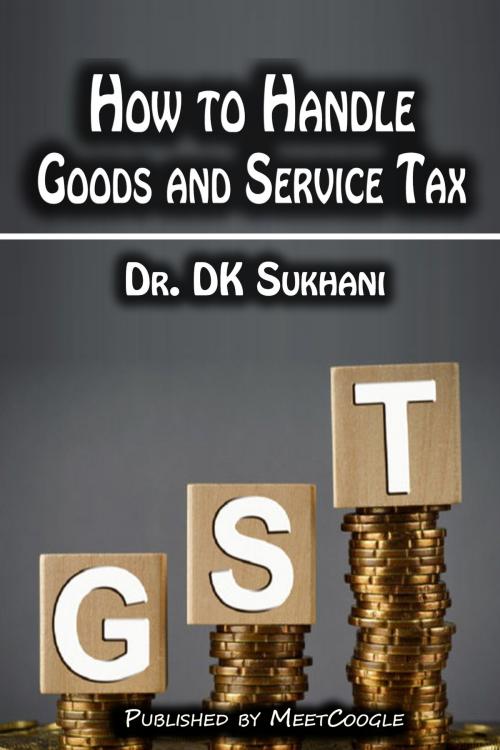How to Handle Goods and Service Tax (GST)
Nonfiction, Social & Cultural Studies, Political Science, Politics, Economic Policy| Author: | Dr. DK Sukhani | ISBN: | 9781370001446 |
| Publisher: | MeetCoogle | Publication: | June 30, 2017 |
| Imprint: | Smashwords Edition | Language: | English |
| Author: | Dr. DK Sukhani |
| ISBN: | 9781370001446 |
| Publisher: | MeetCoogle |
| Publication: | June 30, 2017 |
| Imprint: | Smashwords Edition |
| Language: | English |
GST is a value-added tax levied at all points in the supply chain, with credit allowed for any tax paid on input acquired for use in making the supply. It would apply to both goods and services in a comprehensive manner, with exemptions restricted to a minimum.
In keeping with the federal structure of India, it is proposed that the GST will be levied concurrently by the central government (CGST) and the state government (SGST). It is expected that the base and other essential design features would be common between CGST and SGSTs for individual states. The inter-state supplies within India would attract an integrated GST (IGST), which is the aggregate of CGST and the SGST of the destination state.
GST would be levied on the basis of the destination principle. Exports would be zero-rated, and imports would attract tax in the same manner as domestic goods and services. In addition to the IGST in respect of supply of goods, an additional tax of up to 1% has been proposed to be levied by the central government. The revenue from this tax is to be assigned to the origin states. This tax is proposed to be levied for the first two years or a longer period, as recommended by the GST Council.
With GST, it is anticipated that the tax base will be comprehensive, as virtually all goods and services will be taxable, with minimum exemptions. GST would bring in a modern tax system to ensure efficient and effective tax administration. It will bring in greater transparency and strengthen monitoring, thus making tax evasion difficult. While the process of implementation of GST unfolds in the next few months, it is important for industry to understand the impact and opportunities offered by this reform. GST will affect all industries, irrespective of the sector. It will impact the entire value chain of operations, namely procurement, manufacturing, distribution, warehousing, sales and pricing.
GST is a value-added tax levied at all points in the supply chain, with credit allowed for any tax paid on input acquired for use in making the supply. It would apply to both goods and services in a comprehensive manner, with exemptions restricted to a minimum.
In keeping with the federal structure of India, it is proposed that the GST will be levied concurrently by the central government (CGST) and the state government (SGST). It is expected that the base and other essential design features would be common between CGST and SGSTs for individual states. The inter-state supplies within India would attract an integrated GST (IGST), which is the aggregate of CGST and the SGST of the destination state.
GST would be levied on the basis of the destination principle. Exports would be zero-rated, and imports would attract tax in the same manner as domestic goods and services. In addition to the IGST in respect of supply of goods, an additional tax of up to 1% has been proposed to be levied by the central government. The revenue from this tax is to be assigned to the origin states. This tax is proposed to be levied for the first two years or a longer period, as recommended by the GST Council.
With GST, it is anticipated that the tax base will be comprehensive, as virtually all goods and services will be taxable, with minimum exemptions. GST would bring in a modern tax system to ensure efficient and effective tax administration. It will bring in greater transparency and strengthen monitoring, thus making tax evasion difficult. While the process of implementation of GST unfolds in the next few months, it is important for industry to understand the impact and opportunities offered by this reform. GST will affect all industries, irrespective of the sector. It will impact the entire value chain of operations, namely procurement, manufacturing, distribution, warehousing, sales and pricing.















